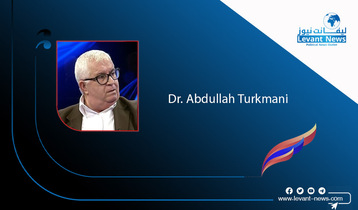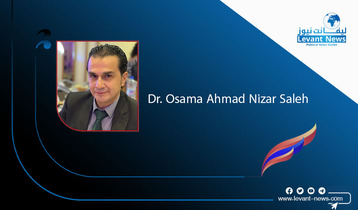-
Playing Chicken in Northeast Syria

During the Cold War as the two Superpowers navigated geopolitical tensions, some of the nearest misses came in the form of accidents that could have triggered a third world war or some form of nuclear apocalypse. Planes carrying deadly missiles would crash land, radar systems would malfunction and warn of pre-emptive strikes, nuclear submarines would play cat and mouse games in ocean trenches.
Whilst these days are long gone and the Cold War is over, the relationship between Russia and the USA remains strained and nowhere is this more obviously manifested than in northeast Syria. Last week several US troops were injured in a collision with a Russian military vehicle in northeast Syria, with at least four troops suffering mild concussion-like injuries. Thanks to social media unlike Cold War incidents this collision, something reminiscent of a Mad Max scene, was quickly seen and shared around the world.
Armoured US and Russian vehicles are now playing a bizarre game of chicken along the desert roads of northeast Syria with hugely dangerous and unpredictable consequences. When the two countries initially found themselves on opposite sides of Syria’s fast changing frontlines, conduct was characterised as being professional and respectful. That’s clearly no longer the case. Chief Pentagon Spokesperson Jonathan Hoffman explained later in the week that the US “have advised the Russians that their behaviour was dangerous and unacceptable. We expect a return to routine and professional deconfliction in Syria and reserve the right to defend our forces vigorously whenever their safety is put at risk.”
Within such diplomatic language is the clear ‘right to defend our forces’ which could of course mean that events could quite easily spiral out of control. What would have happened, for example, if the US vehicle had been flipped and could no longer leave the area, would the rest of the convoy have fired on Russian forces?
There is no better evidence to the unpredictability and unsustainability of the situation in this corner of Syria than this dangerous dance of armoured vehicles. The Russians blamed the US for the incident saying that it was their vehicles who were being prevented in carrying out what had been an agreed patrol.
Moscow has a deeper and more historic role in Syria than Washington. Whilst the US arrived to help fight ISIS it has kept a force of around 500 soldiers, despite President Trump promising a full withdrawal, to protect oil infrastructure and coordinate with the Syrian Democratic Forces (SDF). Moscow is interested in Regime preservation and consolidating Syria as a forward base for its influence, it has up to 4,100 soldiers in the country and has played a key role in helping Damascus restore control over territory lost over the course of the nearly decade long conflict.
Moscow is seemingly not willing to allow the continued US presence to proceed without cost and giving its forces the authority to ram US vehicles is a clear sign of intent. Back in February 2018 a large force of Russian mercenaries launched an assault against US positions near a major oilfield. They were repulsed, suffering heavy casualties, but the incident was more evidence of Moscow’s decision to push back against the US.
Considering Trump’s reticence to still have US forces in the country and with an election looming, one wonders what could happen if these tensions manifest in US soldiers being more seriously injured or killed. Would Trump double down, increase the US presence in the area and loosen the rules of engagement as a manifestation of strength? Or would any further incident be a trigger for him to order a more abrupt full withdrawal which could have a cascade effect on the power balance for a large chunk of the country?
Such is the unpredictability of the situation and how a single incident could metastasise into a series of events that could impact significantly on the balance of power in the country going forward. At a tactical level there is an obvious need to review and restart whatever deconfliction processes are currently in play in the area, at a political level Moscow and Washington have to decide whether this part of the world is a zone of cooperation or a zone of competition. Moscow appears to have made its mind up that the US interest is temporal and shallow and that it can be nudged into withdrawal by a show of more aggressive intent by Russian forces. However, Trump’s unpredictability makes this approach by no means guaranteed to succeed and instead unforeseen events could follow if the game of ‘chicken’ were to continue.

by : jamse danselow
Tags
You May Also Like
Popular Posts
Caricature
BENEFIT Sponsors BuildHer...
- April 23, 2025
BENEFIT, the Kingdom’s innovator and leading company in Fintech and electronic financial transactions service, has sponsored the BuildHer CityHack 2025 Hackathon, a two-day event spearheaded by the College of Engineering and Technology at the Royal University for Women (RUW).
Aimed at secondary school students, the event brought together a distinguished group of academic professionals and technology experts to mentor and inspire young participants.
More than 100 high school students from across the Kingdom of Bahrain took part in the hackathon, which featured an intensive programme of training workshops and hands-on sessions. These activities were tailored to enhance participants’ critical thinking, collaborative problem-solving, and team-building capabilities, while also encouraging the development of practical and sustainable solutions to contemporary challenges using modern technological tools.
BENEFIT’s Chief Executive Mr. Abdulwahed AlJanahi, commented: “Our support for this educational hackathon reflects our long-term strategic vision to nurture the talents of emerging national youth and empower the next generation of accomplished female leaders in technology. By fostering creativity and innovation, we aim to contribute meaningfully to Bahrain’s comprehensive development goals and align with the aspirations outlined in the Kingdom’s Vision 2030—an ambition in which BENEFIT plays a central role.”
Professor Riyadh Yousif Hamzah, President of the Royal University for Women, commented: “This initiative reflects our commitment to advancing women in STEM fields. We're cultivating a generation of creative, solution-driven female leaders who will drive national development. Our partnership with BENEFIT exemplifies the powerful synergy between academia and private sector in supporting educational innovation.”
Hanan Abdulla Hasan, Senior Manager, PR & Communication at BENEFIT, said: “We are honoured to collaborate with RUW in supporting this remarkable technology-focused event. It highlights our commitment to social responsibility, and our ongoing efforts to enhance the digital and innovation capabilities of young Bahraini women and foster their ability to harness technological tools in the service of a smarter, more sustainable future.”
For his part, Dr. Humam ElAgha, Acting Dean of the College of Engineering and Technology at the University, said: “BuildHer CityHack 2025 embodies our hands-on approach to education. By tackling real-world problems through creative thinking and sustainable solutions, we're preparing women to thrive in the knowledge economy – a cornerstone of the University's vision.”
opinion
Report
ads
Newsletter
Subscribe to our mailing list to get the new updates!




















